Roberta Bondar: Trailblazer in space, explorer on Earth
On January 22, 1992, Dr. Roberta Bondar, MSc’71 in Pathology, DSc’95, made history. Aboard NASA’s Space Shuttle Discovery, she became the world’s first neurologist and Canada’s first female astronaut in space. Her historic voyage inspired her current mission: engaging people of all ages to protect planet Earth by exploring the natural wonders of the world.
Changing views
Thirty years after her groundbreaking journey, Bondar recalls flying west to east over Canada, looking out the window as the orbit moved closer to her hometown of Sault Ste. Marie, Ont.
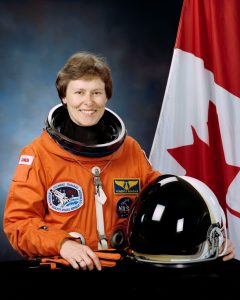
“It was a ‘wow moment,’” Bondar said. “I was able to listen to O Canada played on my headset because I deliberately brought a recording of my aunt playing it on the organ.” Lyndon Slewidge, who used to sing the national anthem at the Soo Greyhounds and Ottawa Senators games, was singing in his deep voice as Bondar tried to capture the emotion of the moment, she recalled.
“To see the Great Lakes and the place on the planet where my grandparents lived and where my parents were born made me wonder what the view would have been like a thousand years before,” Bondar said. “What would this view from space be like in the Ice Age? Thinking historically about the earth as a planet continuing to evolve, reinforced for me that life on our planet is fragile.”
After returning home, Bondar led an international research team to study the effects of spaceflight on the human body, while also becoming an honours student in professional nature photography. Her photographs reflect her passion to protect the planet, capturing Canada’s National Parks and other ecologically significant environments. She later co-founded The Roberta Bondar Foundation to engage people in conservation by appealing to their curiosity and creativity – two traits key to her achievements as an astronaut, environmentalist, photographer, medical doctor, scientist and role model.
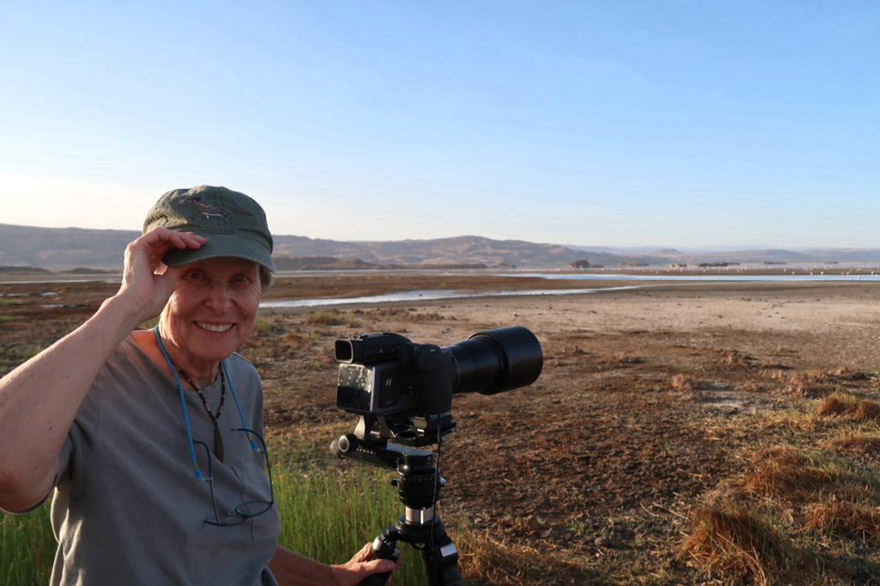 The Roberta Bondar Foundation
The Roberta Bondar Foundation
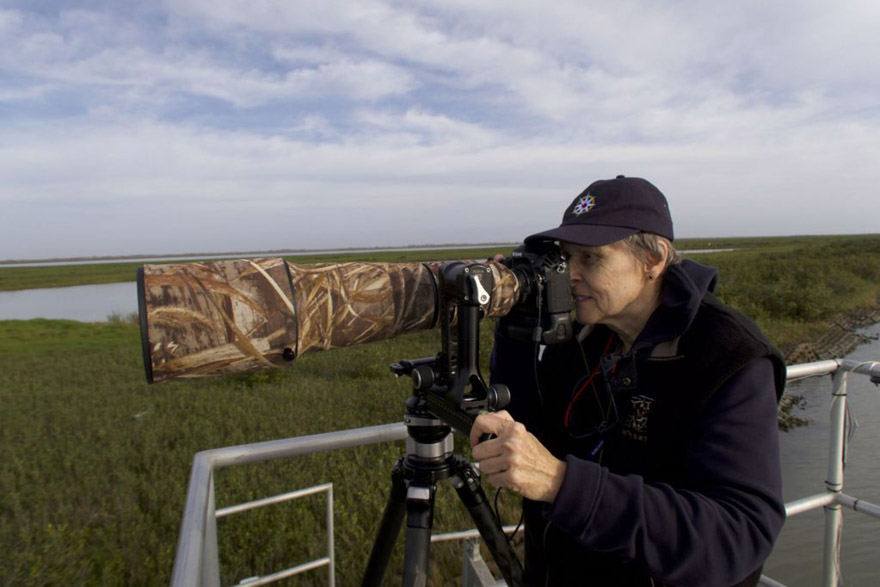 The Roberata Bondar Foundation
The Roberata Bondar Foundation
‘Watershed’ moment at Western
Bondar said she never doubted she would one day go to space. As a child, she built model rockets, pretended to be Flash Gordon, and read books about stars. She credits her parents for supporting her dream and cultivating her interests and those of her sister Barbara.
“There was a great respect for learning and sharing of information in our household and a great fusion of science and art,” Bondar said. Her mother, a teacher, encouraged her to ask questions and learn from others. Her father built her a science lab in the basement. Bondar sat by his side in the summer of ’69 watching Apollo 11 land on the moon.
That fall she came to Western, to pursue her master’s in pathology. It was a path unforeseen when she first visited the campus to meet pioneering biologist and Western professor Helen Battle.
“Dr. Battle was a wonderful energetic woman,” Bondar said. “When I told her I really liked microscope work, and was interested in medicine, she said, ‘Oh no, you don’t want to do your master’s with me then.’ I was crestfallen, but before I could even respond, she had called Cam Wallace, the head of the pathology department, and suddenly I went from working with pickled specimens in zoology to tissue specimens in jars.”
Seeing a brain specimen for the first time was “a watershed moment,” for Bondar.
“I had seen brains in jars watching science fiction growing up, but its complexity challenged my whole way of thinking and turned my life around, in terms of my research.” As a result, Bondar altered her path and pursued her PhD in neurology after medical school.
By the time NASA selected her in 1984 to join a team of six Canadian astronauts, she was more qualified academically than any other candidate selected for the program.
“The moral of the story is, if you start down one path –and providing an institution is generous of spirit, education and opportunity – you can diversify.”
One small step for man
Three decades later, are there more opportunities for women in aerospace and space exploration?
“Yes, thanks to changes in technology,” Bondar said. “There are now more opportunities for men and women.
“When I went up, I was one woman in a crew of six men,” Bondar said. “Julie (Payette) was one in four, Jenni (Sidney-Gibbons) is one in four. Jenni, at least, was trained for a spacewalk, whereas it was unheard of in those days for Julie and me. The men could fly and trained to spacewalk. But not women.”
“Being first, there are a lot of things I reflect on. Given the wisdom I have today, the climate and the way people approach space, I’d tell myself not to tolerate the things I put up with.”
And with more opportunities for Canadians to fly, Bondar hopes it brings a diversity that better reflects the population. “I believe there are people out there who are qualified, who are not military, or just white males or white females, and we would benefit from other cultures.”
Bondar knows the value first-hand, working on a flight that was the precursor to the international space station. She worked with scientists around the world years before the flight to perform 140 experiments in space on behalf of researchers from 13 countries.
“(NASA) travelled me all over to train on these experiments. I was working with scientists at all hours in their labs, eating with them, talking with them, learning everything from life sciences to material sciences. It’s not just learning about how people think in different countries, it’s seeing how cultures embrace certain forms of science and art and learning from it to develop new pathways. That was the gift for me; being on an international flight and then flying over.”
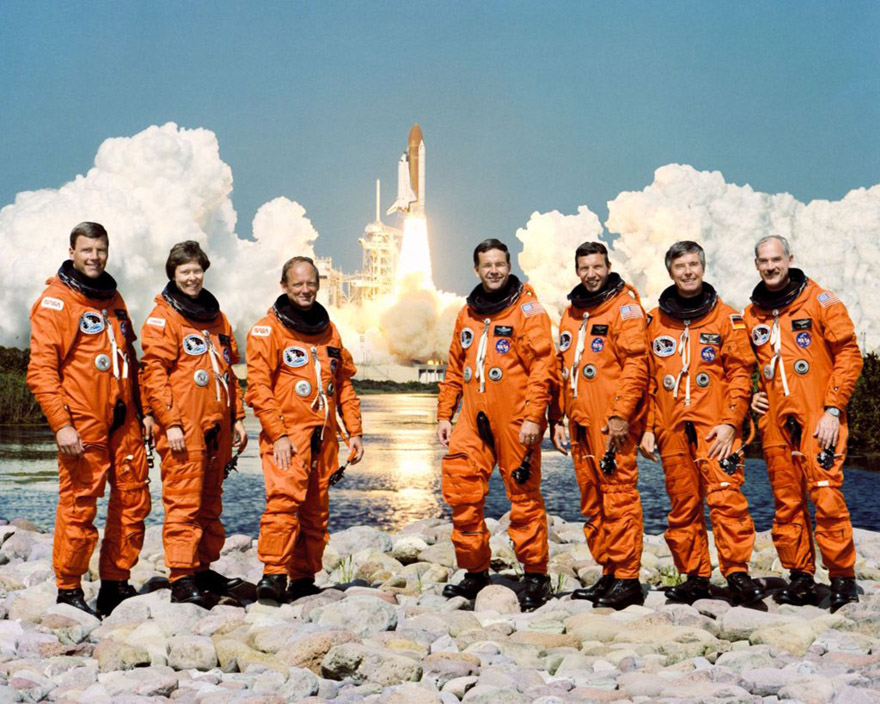 STS-42 mission crew (NASA)
STS-42 mission crew (NASA)
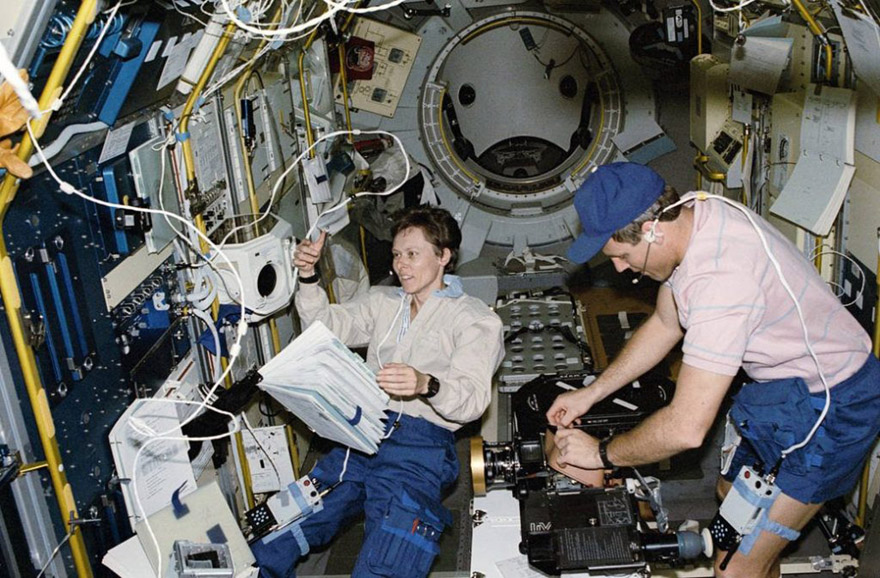 Bondar works at the International Microgravity Laboratory’s (IML-1) biorack while astronaut Stephen S. Oswald, pilot, changes a film
Bondar works at the International Microgravity Laboratory’s (IML-1) biorack while astronaut Stephen S. Oswald, pilot, changes a film
Protecting space for birds
Bondar is still conducting scientific research today, with a focus on endangered and threatened birds. She designed and is executing the Protecting Space for Birds project, partnering with NASA as a principal investigator, studying how natural and human-inspired changes impact the safe passage of migratory birds.
“When I look at small birds, especially songbirds, they’re so fragile, and yet, they do things better than I can,” Bondar said. “I need an airplane to fly. We don’t know much about (birds’) flight patterns, but there’s so much to learn from studying the natural environment. That makes me excited, and I’m glad to be part of it.”








